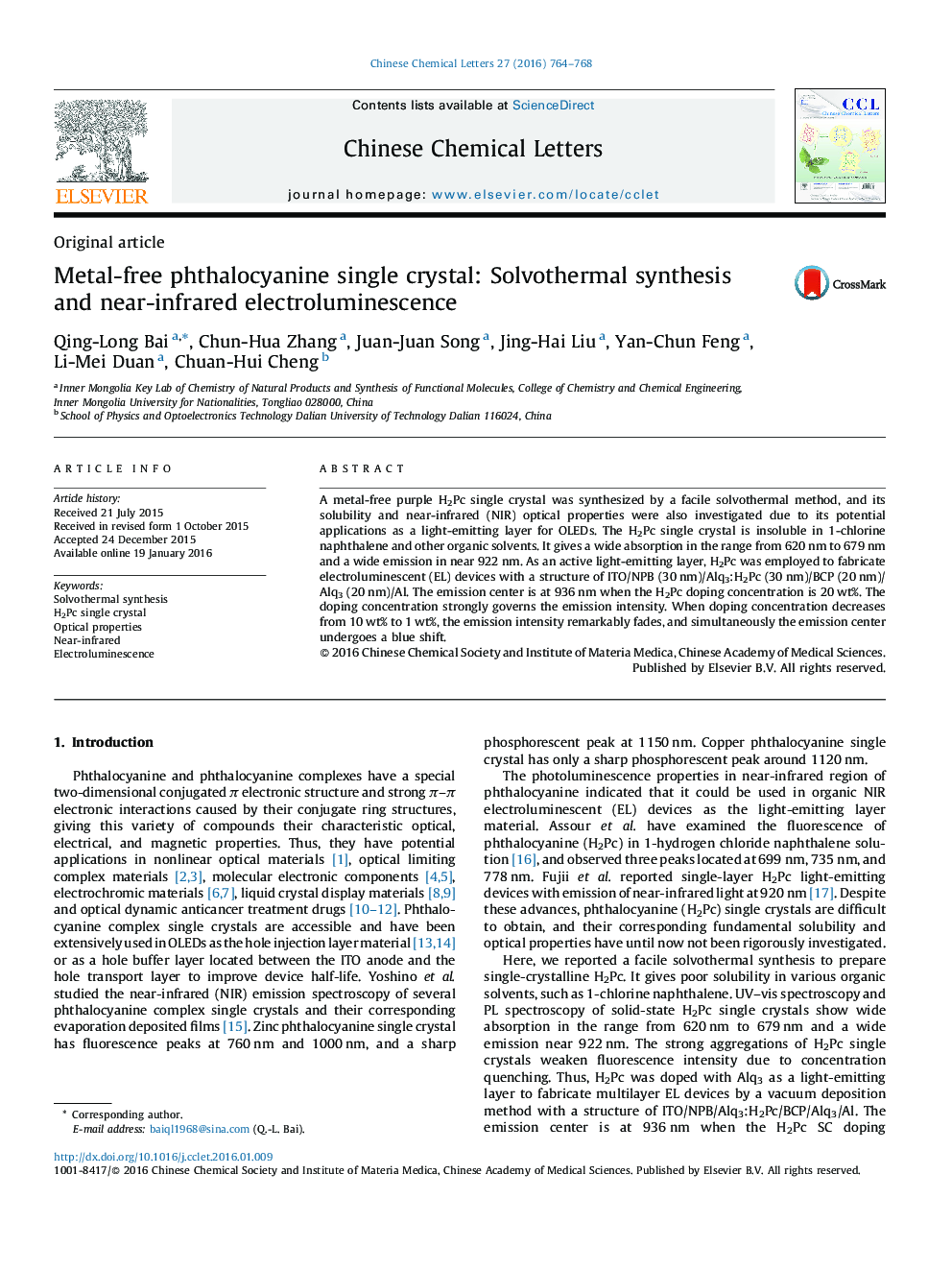| Article ID | Journal | Published Year | Pages | File Type |
|---|---|---|---|---|
| 1253982 | Chinese Chemical Letters | 2016 | 5 Pages |
A metal-free purple H2Pc single crystal was synthesized by a facile solvothermal method, and its solubility and near-infrared (NIR) optical properties were also investigated due to its potential applications as a light-emitting layer for OLEDs. The H2Pc single crystal is insoluble in 1-chlorine naphthalene and other organic solvents. It gives a wide absorption in the range from 620 nm to 679 nm and a wide emission in near 922 nm. As an active light-emitting layer, H2Pc was employed to fabricate electroluminescent (EL) devices with a structure of ITO/NPB (30 nm)/Alq3:H2Pc (30 nm)/BCP (20 nm)/Alq3 (20 nm)/Al. The emission center is at 936 nm when the H2Pc doping concentration is 20 wt%. The doping concentration strongly governs the emission intensity. When doping concentration decreases from 10 wt% to 1 wt%, the emission intensity remarkably fades, and simultaneously the emission center undergoes a blue shift.
Graphical abstractH2Pc single crystal was synthesized by a facile solvothermal method. H2Pc single crystal doping into Alq3 as an active light-emitting layer was employed to fabricate electroluminescent (EL) devices with a structure of ITO/NPB (30 nm)/Alq3:H2Pc (30 nm)/BCP (20 nm)/Alq3 (20 nm)/Al. The emission center is near 936 nm with H2Pc doping concentration of 20 wt%. The emission intensity is also related to the H2Pc doping concentration. When doping concentration decreases from 10 wt% to 1 wt%, the emission intensity fades, and simultaneously the centers of emission wavelength undergo a blue shift.Figure optionsDownload full-size imageDownload as PowerPoint slide
